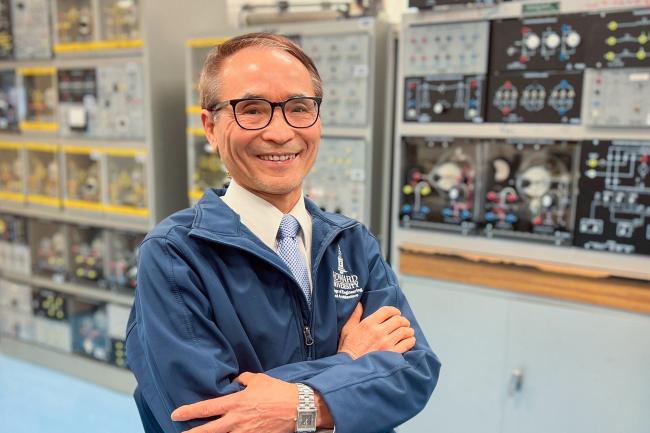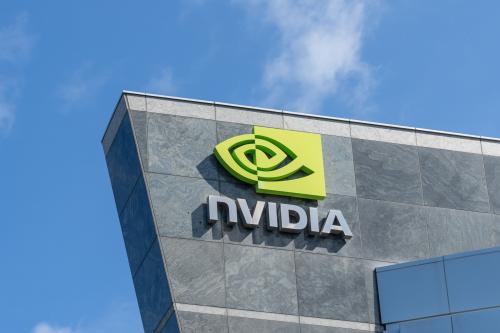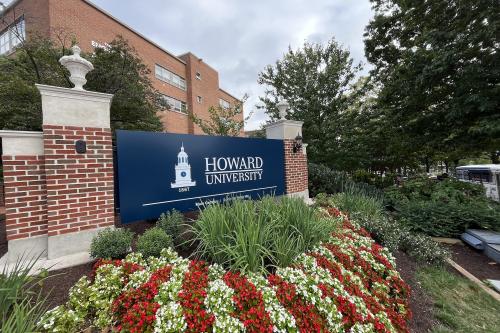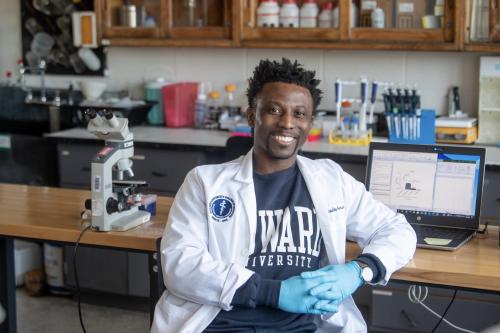
Charles Kim, Ph.D. is the inventor behind Howard’s very first commercialized patent—a groundbreaking device that has the potential to transform how cities prepare for and prevent electrical brownouts. Kim, a professor in the Department of Electrical Engineering and Computer Science, is a trailblazer in innovation and exemplifies Howard's forward-thinking research.
The Brownout Detector: A Game-Changer for Public Safety
Dr. Kim’s invention, the Brownout Detector, highlights the powerful intersection of technology and public service. A brownout is a temporary drop in voltage in an electrical power supply that can cause devices to malfunction or even become damaged over time. Unlike a blackout, where power is completely lost, a brownout results in reduced voltage, often due to high demand or power distribution issues. Sensitive electronics may struggle to function properly at lower voltages, leading to potential harm.
Studies show that power outages affect underserved and economically challenged communities disproportionately, where infrastructure is often older, outdated, or simply non-existent. Especially when prolonged, they can result in financial challenges associated with items such as spoiled food or medicine that must be refrigerated. Stakes can even be higher when people with health risks are reliant on continuous electricity to power the medical equipment keeping them alive.
Dr. Kim’s device allows cities to predict electrical brownouts before they occur, providing a critical window of time to prevent widespread power disruptions. This innovation not only enhances the reliability of electrical grids but also has a significant impact on public safety and the economic well-being of communities.
The path to commercializing this technology exemplifies how Howard’s research environment fosters innovation. Dr. Kim credits the support of Howard University’s faculty, administrators, and research office staff for helping make this achievement possible. His work thrives within an ecosystem that encourages intellectual property (IP) development and technology transfer to industry, ultimately benefiting the public. The recent licensing of Dr. Kim’s patents to a company focused on failure prediction and outage prevention for electric distribution systems underscores the value of Howard’s growing IP portfolio.

The Invention Process: Solving a Hidden Problem
Dr. Kim’s journey to creating the Brownout Detector began with a focus on a tricky issue in electrical systems: self-clearing cable faults. These faults happen in underground cables when the insulation around the wires starts to break down over time, often due to tiny cracks or water getting in. When this occurs, electricity can flow through the damaged area, creating a quick spike in power. While the fault is short-lived, it can lead to larger, permanent failures if not caught early.
Traditional methods for detecting faults rely on signals that last longer, but self-clearing faults only last for a few milliseconds—far too short for these methods to pick up. This gap in detection led Dr. Kim to think differently.

Instead of focusing on the usual methods that measure the strength and angle of voltage and current signals, Dr. Kim shifted his focus to the timing of these signals. He developed a new approach to detect faults more accurately by analyzing how the voltage and current change over time. His method allowed him to figure out the characteristics of the electrical circuit—such as resistance and inductance—which helped pinpoint where the fault occurred.
After testing and refining his approach through simulations and real-world data, Dr. Kim perfected the model. His work led to the development of a more precise way to locate faults, which ultimately resulted in three U.S. patents for his innovative solutions in fault detection and brownout prediction.
Dr. Kim Reflects on Howard Role in His Achievement
“Howard University’s focus on intellectual property has allowed me to contribute significantly through patent attainment and technology transfer, which directly align with the University’s commitment to public service,” Kim said.
He points to the University’s IP policy and Howard’s emphasis on “Inspire New Knowledge” as key drivers of his success. This initiative prioritizes innovation in research and entrepreneurship, creating an environment where both faculty and students are encouraged to pursue groundbreaking work.
Invention can come from anyone, even without a comprehensive understanding of a subject field.”
Inspiring the Next Generation of Innovators
Dr. Kim’s work has made waves in the field of electrical engineering while also inspiring countless students at Howard University. He is passionate about fostering creativity and innovation in the next generation of engineers.
“Invention can come from anyone, even without a comprehensive understanding of a subject field,” Dr. Kim emphasized. “It’s about experimenting and solving problems in your own unique way. I hope my students learn to think outside the box and embrace their creativity in their work.”
Dr. Kim’s mentorship and groundbreaking research have encouraged students to approach problems with a sense of curiosity and ingenuity. His work, both in the classroom and in collaborative faculty-student projects, continues to shape the minds of Howard’s future innovators.
A Ripple Effect Across the Nation
Dr. Kim’s impact extends beyond Howard University. His patents and research have inspired faculty peers both at Howard and across the nation. “I hope my work encourages my colleagues to channel their expertise into public service through innovation and technology transfer,” he said. “By doing so, we can address some of the world’s most pressing challenges through the application of cutting-edge technology.”
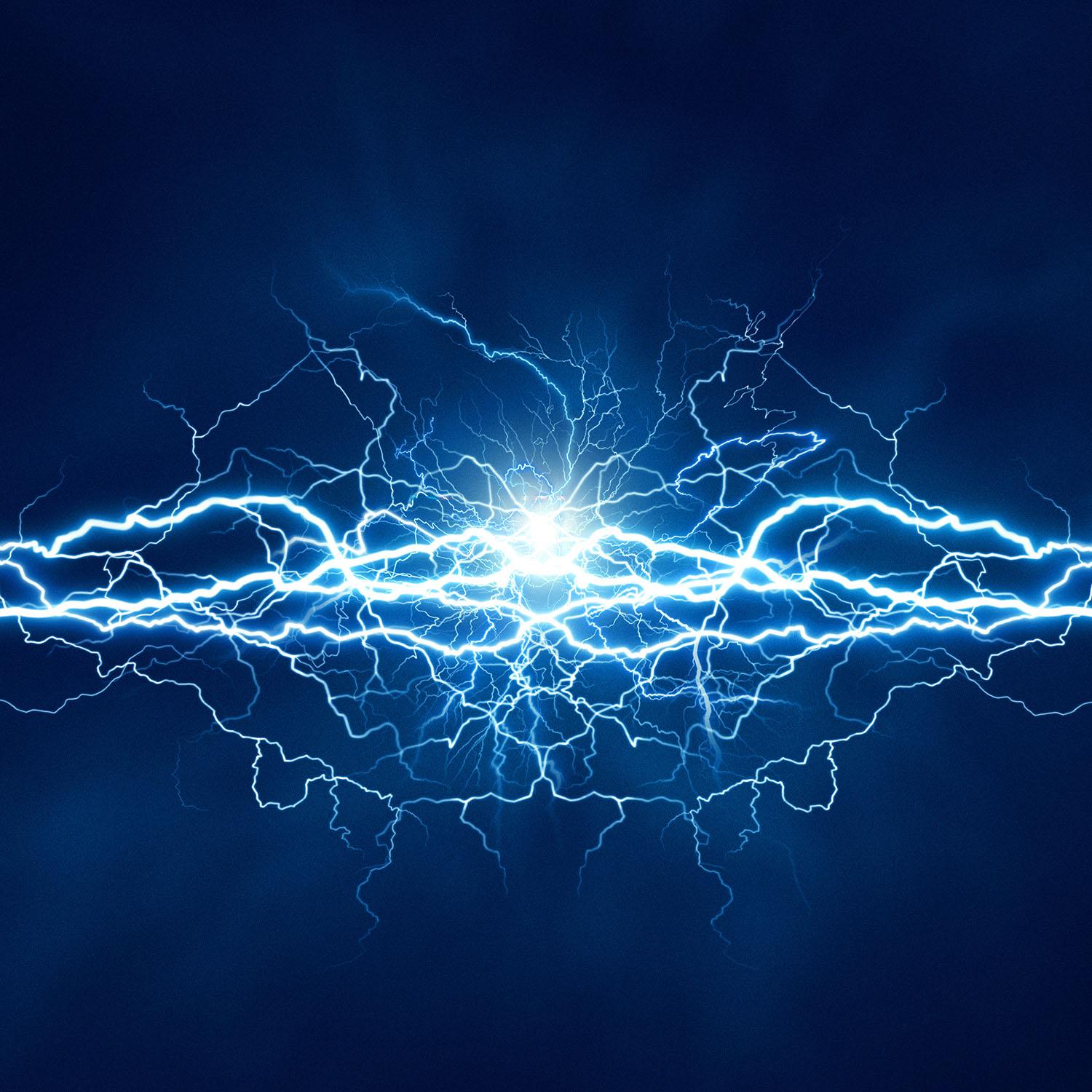
Looking to the Future: Enhancing Public Safety Through Innovation
As Dr. Kim reflects on his achievements, he is also looking ahead. His future research is focused on enhancing public safety through technological innovation, particularly in the realm of protecting critical infrastructure from cyber threats. “The current research focus is on enhancing safety for infrastructures like power substations or water treatment plants, which are increasingly vulnerable to cyber-attacks,” he explained. “I’m working to develop a second line of defense, both physical and digital, to ensure that these facilities can continue to operate safely and securely, even in the face of cyber threats.”
This high-impact research has the potential to expand beyond critical infrastructure, with possible applications in emerging technologies such as autonomous vehicles.
A Bright Future for Howard University and Beyond
Howard University’s research success is a testament to the power of collaboration, innovation, and service to the public. Dr. Charles Kim’s pioneering work in electrical engineering and technology transfer is just one example of how the University is leading the charge in producing impactful research that improves lives and fosters economic growth. As Howard continues to build its research portfolio and attract top talent, the future of innovation at this historic institution looks brighter than ever.


